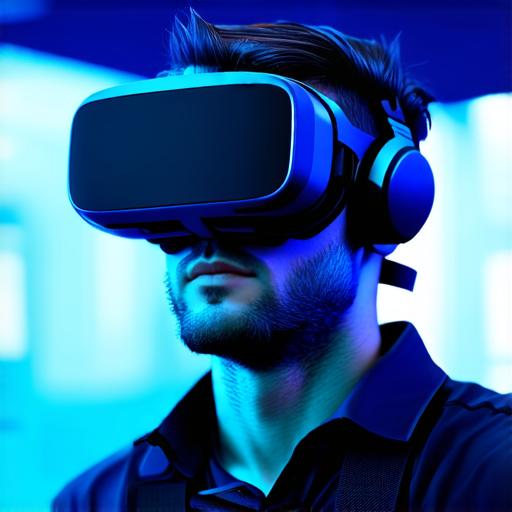
What does a virtual reality headset do?
The basics of VR headsets
A VR headset is a device that sits on top of the user’s head and captures their environment through sensors and cameras. It then displays this information in 3D, allowing the user to experience a virtual world that is superimposed on their real-world surroundings. There are two main types of VR headsets: wired and wireless.
The role of sensors in VR headsets
Sensors are an essential component of VR headsets. They capture information about the user’s surroundings and track their movements. Some common types of sensors used in VR headsets include:
- Infrared (IR) sensors: These sensors use light to detect objects and track the user’s movements. They are commonly used in wired VR headsets.
- Ultrasonic sensors: These sensors use sound waves to measure distance and track movement. They are often used in wireless VR headsets.
- Magnetic sensors: These sensors detect changes in the Earth’s magnetic field, which can be used to track head movement. They are commonly used in wired VR headsets.
The role of cameras in VR headsets
Cameras are another essential component of VR headsets. They capture the real-world environment and display it in 3D for the user to see. Some common types of cameras used in VR headsets include:
- Single-camera systems: These systems use a single camera to capture the user’s surroundings and project them onto the headset. They are commonly used in wired VR headsets.
- Stereo camera systems: These systems use two cameras to capture a 3D image of the environment and display it on the headset. They are often used in wireless VR headsets.
The role of software in VR headsets
Software is another important component of VR headsets. It processes the data captured by the sensors and cameras, and displays it in a way that creates an immersive virtual world for the user. Some common types of VR software include:
- Game engines: These are specialized software packages that are designed to create interactive games and experiences. They are commonly used in VR gaming.
- Content creation tools: These are software packages that allow developers to create custom VR content, such as 3D models and animations.
- Operating systems: These are the underlying software that control the functionality of the headset and provide a platform for running other software.
The benefits of VR headsets
There are many benefits to using VR headsets, including:

- Improved immersion: VR headsets allow users to experience environments in a way that is much more immersive than traditional media, such as TV or gaming consoles.
- Enhanced learning and training: VR headsets can be used for educational purposes, such as simulating real-world scenarios and providing hands-on training experiences.
- Improved therapy and rehabilitation: VR technology can be used to provide immersive therapy and rehabilitation experiences for patients with a variety of conditions, including PTSD and anxiety disorders.
Case studies in VR headset use
One example of the benefits of VR headsets is their use in healthcare settings. In one study, researchers found that using VR technology to simulate surgical procedures led to significant improvements in surgical skills and reduced patient discomfort compared to traditional training methods.
Another example is the use of VR headsets for therapy. For instance, a study conducted by the University of Southern California found that VR exposure therapy was effective in reducing symptoms of PTSD in veterans.
Personal experiences with VR headsets
As a virtual reality developer, I have had the opportunity to use VR headsets extensively. One of my favorite uses for VR is in gaming. The ability to experience games in an immersive 3D environment is truly amazing and has led to some incredible gaming experiences.
I’ve also used VR headsets for educational purposes, such as simulating real-world construction sites for training workers. This provided a safe and controlled environment for workers to practice their skills without the risk of injury or damage to equipment.
In conclusion
Virtual reality headsets are an exciting technology that offer many benefits for users. They capture and display VR content in a way that creates an immersive virtual world for the user. The sensors, cameras, and software all work together to create this experience, and there are many different types of software available for various purposes. As VR technology continues to evolve, we can expect to see even more exciting applications for headsets in the future.


